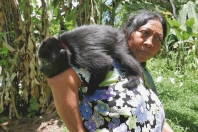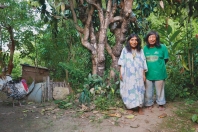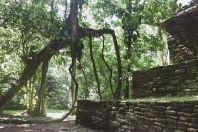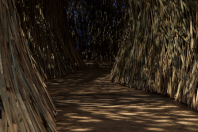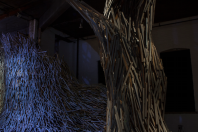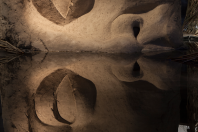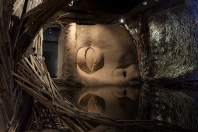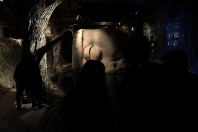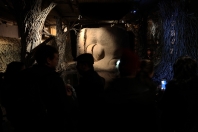Anima
Anima is based on the legend of K’in Obregon, an enigmatic figure of the Lacandon Maya tribe exhibited in a human zoo in 1937, to explore the boundaries between animate and inanimate, human and animal, naturalism and animism.
Following two trips to the Mexican jungle, Prune Nourry and Valentine Losseau, an anthropologist working with the Lacandon Mayas for many years, created a multisensory exhibition and invited magicians, artists, sculptors and scenographers to participate. By immersing ourselves in this imaginary forest set in the heart of the city, we are prompted to meditate on the difference between man and animal, and on the concept of a "soul".
Prune Nourry - artist & Valentine Losseau - anthropologist have invited:
Raphaël Navarro (La Cie 14:20) - magician
Takao Shiraishi - artist
Etienne Saglio - magician
Benjamin Gabrié - scenographer
The multi-sensory exhibition Anima is a meditation on the divide between Man and Animal and a reflection on the concept of the soul as told through a legendary Lacandon figure, K’in Obregon. Obregon is an important character for the Lacandon Maya people, who have been living in the Mesoamerican Rainforest for centuries. Valentine Losseau, an anthropologist and dramatist, has been working with K’in Obregon’s family for seven years and spoke with K’in about his strange and mysterious life shortly before his death.

According to legend, K’in Obregon was invited to the Exposition Universelle in Paris in 1937 to be exhibited as a “native” in what today might be called a human zoo. This practice has been condemned for the dehumanization of indigenous peoples in portraying them as curiosities, as animals. K’in then returned to Mexico and his death was announced several years later. One day, however, he reappeared in his community, claiming he had been reincarnated.
Anima uses the tale of this enigmatic figure as a starting point to investigate the divide between animate and inanimate, human and animal, naturalism and animism. On the one hand, the “occidental” perspective places man above the natural world and the animal, both of which are devoid of the soul. On the other hand, for the Mayan, each of their lives are fundamentally linked to an animal totem, a creature existing simultaneously in the physical world and the underworld.Every night, the Lacandons turn themselves into animal forms in their dreams, which they view as a dimension of the real.
Visitors will partake in an experimental and sensorial experience lodged between forest and archeological site, immersed in a world of myth and magic. Children will be the main actors in this installation thanks to a supplemental book to enrich the visit, and will be invited to expand on the perspectives that change and evolve with the rise and fall of civilizations, eras and ecosystems. All are invited to ask: what if the relationship between humans and animals was not vertical, but horizontal, as equals? What if animals do have souls?
This project was conceived during a meeting between anthropologist Valentine Losseau and Prune Nourry, a french artist-in-residence at The Invisible Dog Art Center. After an exploratory trip to Mexico, several artists from disparate fields, united by a common train of thought, worked together to create this immersive and unprecedented experience in the heart of New York City.
Anima is commissioned by The Invisible Dog Art Center and co-presented with Tilt Kids Festival, a production of
the French Institute Alliance Française (FIAF) and the Cultural Services of the French Embassy.
With the generous support of Elizabeth Krief Manardo & Jacques Manardo
Anima 2015-2016


